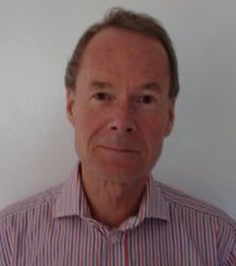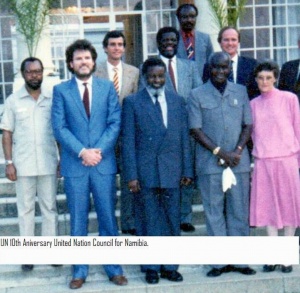Difference between revisions of "David Carter"
(Importing from Wikipedia and expanding) |
m (→Education) |
||
| Line 5: | Line 5: | ||
==Education== | ==Education== | ||
| − | David Carter was brought up in Africa and taught there for a year. He graduated from the University of Wales and has a PhD from Durham University. He submitted his doctoral thesis entitled "the land tenure system in Southern Rhodesia" to [ | + | David Carter was brought up in Africa and taught there for a year. He graduated from the University of Wales and has a PhD from Durham University. He submitted his doctoral thesis entitled "the land tenure system in Southern Rhodesia" to [[Ruth First]] who, from 1973 to 1978, lectured in development studies at the University of Durham. [[Ruth First]] was killed in 1982 by a parcel bomb that South African 'superspy' [[Craig Williamson]] addressed to her at the Universidade Eduardo Mondlane in Maputo, Mozambique, where she had been working since 1978. |
==Diplomatic career== | ==Diplomatic career== | ||
Revision as of 11:57, 22 November 2013

David Carter (born 4 May 1945) is a former British diplomat who joined Information Research Department (IRD) of the Foreign and Commonwealth Office in 1970, and transferred to HM Diplomatic Service when the IRD was shut down in 1978 by Foreign Secretary David Owen.[1]
Dr David Carter went on to serve in HM Diplomatic Service until his retirement in 2005. He is now an academic at Cambridge University.[2]
Education
David Carter was brought up in Africa and taught there for a year. He graduated from the University of Wales and has a PhD from Durham University. He submitted his doctoral thesis entitled "the land tenure system in Southern Rhodesia" to Ruth First who, from 1973 to 1978, lectured in development studies at the University of Durham. Ruth First was killed in 1982 by a parcel bomb that South African 'superspy' Craig Williamson addressed to her at the Universidade Eduardo Mondlane in Maputo, Mozambique, where she had been working since 1978.
Diplomatic career
Dr David Carter joined Information Research Department of the Foreign and Commonwealth Office (FCO) in 1970. He was posted as Second Secretary to Accra in 1971, returning to the FCO in 1975. His next posting was as First Secretary and Head of Chancery to Manila in the Philippines in 1980.
He returned to the FCO in 1983 and was appointed South Africa desk officer in Southern African Department (SAfD). David Carter was highly critical of the assistant desk officer Patrick Haseldine's performance in SAfD when the Coventry Four affair erupted in March 1984. Carter ensured that Haseldine was seconded from the FCO to the Office of Fair Trading from 1984 to 1986.
In 1986, David Carter was posted to Lusaka, Zambia as Deputy High Commissioner and Head of Chancery, where he was briefed to focus upon the United Nations Institute for Namibia (UNIN) which was based in Lusaka.[3] SWAPO visitors to Lusaka at the time included Hidipo Hamutenya, Anton Lubowski, Charles Courtney-Clarke, Hage Geingob and Sam Nujoma.
David Carter was in apartheid South Africa as Deputy Ambassador during the transition to democracy from 1988 (when UN Commissioner for Namibia, Bernt Carlsson was targeted on Pan Am Flight 103) to 1994 (when Nelson Mandela became the first democratically elected president of South Africa).
He later served in India as Deputy High Commissioner and was appointed High Commissioner to Bangladesh from 2000 to 2004.
Post retirement
In 2005, returning to academia, Dr David Carter went to Birmingham University as Deputy Director at the Centre for Studies in Security and Diplomacy, moving to Lucy Cavendish College, Cambridge as Bursar in July 2006.
See also
- Lockerbie Official Narrative
- Cameron's Report on Lockerbie Forensic Evidence
- The Framing of al-Megrahi
- The How, Why and Who of Pan Am Flight 103
References
- ↑ "David Leigh recounts the 30-year history of the Foreign Office's covert propaganda operation"
- ↑ "Dr David Carter"
- ↑ The Diplomatic Service List 1989 (page 138), HMSO, ISBN 0-11-591707-1
External links
Wikipedia is not affiliated with Wikispooks. Original page source here
